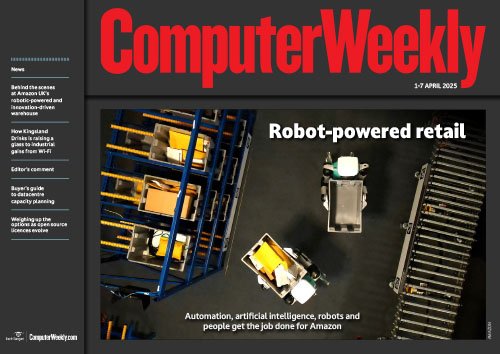www.businessinsider.com
This story is available exclusively to Business Insider subscribers. Become an Insider and start reading now.Have an account? Occupy Wall Street, Notorious RBG, cottagecore. These and several other lasting internet trends and IRL movements of the 2010s were born not on Twitter, on Facebook, or in the mainstream media but on Tumblr. You might remember it as the blogging platform that became one of the most hyped startups in the world before fading into obsolescence bought by Yahoo for $1.1 billion in 2013 (back when a billion still felt like a billion), then acquired by Verizon, and later offloaded for fractions of pennies on the dollar in a distressed sale. That same Tumblr, a relic of many millennials' formative years, has been having a moment among Gen Z.Zoomers have gravitated toward the pseudonymous platform, viewing it as a safe space as the rest of the social internet has become increasingly commodified, polarized, and dominated by lifestyle influencers. As in its heyday, Tumblr is still more about sharing art, culture, and fandom than individual status. More posts about anime and punk rock than bridal trends and politics. In 2025, 50% of Tumblr's active monthly users are Gen Zers, as are 60% of new users signing up, according to data Tumblr shared with Business Insider. And several of Zoomers' icons, from the "Fault in Our Stars" author John Green to the pop superstar Halsey, have come back to the platform."Gen Z has this romanticism of the early-2000s internet," says Amanda Brennan, an internet librarian who worked at Tumblr for seven years, leaving her role as head of content in 2021. She still uses her own Tumblr regularly as the internet's resident meme librarian. "It allows for experimentation that's not tied to your face."Part of the reason young people are hanging out on old social platforms is that there's nowhere new to go. The tech industry is evolving at a slower pace than it was in the 2000s, and there's less room for disruption. Big Tech has a stranglehold on how we socialize. That leaves Gen Z to pick up the scraps left by the early online millennials and attempt to craft them into something relevant. They love Pinterest (founded in 2010) and Snapchat (2011), and they're trying out digital point-and-shoot cameras and flip phones for an early-2000s aesthetic and learning the valuable lesson that sometimes we look better when blurrier. More Gen Zers and millennials are signing up for Yahoo. Napster, surprising many people with its continued existence, just sold for $207 million. The trend is fueled by nostalgia for Y2K aesthetics and a longing for a time when people could make mistakes on the internet and move past them.The pandemic also brought more Gen Z users to Tumblr. The blogging site was an online oasis in the barrage of horrifying news and conspiracy theories, thanks to its acute focus on art and pop culture. And when other platforms take hits, Tumblr benefits: User numbers spiked to coincide with the near-banning of TikTok in January and the temporary ban of X in Brazil last year. Tumblr seems to be a refuge for people searching for new social sites. In January, people launched communities on Tumblr to post and preserve their favorite TikTok videos. Meanwhile, progressives mad at Mark Zuckerberg and Elon Musk for going full MAGA and are ditching Facebook and X as punishment.Tumblr's "blessing for it as a user is a curse for it as a business," says Amanda Brennan, Tumblr's former head of content. "Our menu has been full. There's been no more space to add something else," says Andrew Roth, the 26-year-old founder and CEO of the Gen Z-focused research and consulting firm DCDX. In a poll of more than 600 Zoomers that DCDX conducted in 2024, two-thirds of respondents said they wanted their social media presence to become more private. Tumblr might be just what many young people are looking for. "Now the time feels more ripe for that to happen for Tumblr, even if Tumblr is doing the same thing or staying in the same spot."Ari Levine, the head of brand partnerships at Tumblr, tells me the platform is both "more peaceful" and more resolutely itself than its competitors. While Meta runs around aping its competitors' features (reels from TikTok, stories from Snapchat), it hasn't been able to mimic what Tumblr does (though Meta, then called Facebook, was in talks to buy Tumblr before Yahoo did). "How many times am I in an app and I no longer know what app I'm in?" Levine says.And Tumblr still works much like an older internet, where people have more control over what they see and rely less on algorithms. "You curate your own stuff; it takes a little bit of work to put everything in place, but when it's working, you see the content you want to see," Fjodor Everaerts, a 26-year-old in Belgium who has made some 250,000 posts since he joined Tumblr when he was 14. He says he sees his blog as a "flow of consciousness" and a "diary," one that's mostly made up of reblogging things he finds interesting rather than original posts. In a way, that's a core part of what Tumblr has always done: It's far more focused on fandom and art than it is around single blogs becoming cults of personality.Being an iconic and beloved cultural corner doesn't always lead to cash flows, however, and the site has had a troubled decade. Yahoo bought Tumblr when Tumblr was one of the world's fastest-growing social networks, and it promised not to "screw it up." But Tumblr's embedded anti-advertising and anti-influencer stances had driven a wedge between the site and monetization. The pseudonymous nature of Tumblr was a direct opposition to Facebook's insistence on users using their real names and faces, and the free-flowing adult content on the site scared advertisers off. Yahoo got left behind in the mobile revolution, and Tumblr, too, suffered, with Verizon scooping up both at discount. In 2018, Tumblr notoriously banned porn and pissed off users, which led 30% of them to quit. The next year, Verizon offloaded Tumblr to WordPress' owner, Automattic, for $3 million, 0.3% of what Yahoo had paid for it. Related stories Under Automattic, Tumblr is finally in the home that serves it, Levine says. "We've had ups and downs along the way, but we're in the most interesting position and place that we've been in 18 years," he says. The site is trying to keep what its users love while unveiling features that do rival some of its competitors'. It's a shift after years of staying distinctly itself. In December, Tumblr launched its Communities feature, a sort of Facebook Groups meets subreddits in which people can join groups based on specific interests, like making art of "silly bugs" or emo kids from the Midwest. In January, Tumblr also launched a TikTok competitor called Tumblr TV, which works like a search engine for GIFs and supports videos. And following media companies (including BI) and social platforms like Reddit, Automattic in 2024 was making a deal with OpenAI and Midjourney to allow the systems to train on Tumblr posts.How do we actually monetize people's intentions on social media versus the attention of them being around? Andrew Roth, founder and CEO of the consulting firm DCDX But Tumblr is the 10th-most-popular social media site in the US, dwarfed by Facebook, Instagram, and X, according to data from the analytics firm Similarweb. (Tumblr declined to provide total user numbers to BI, but Levine says it has seen steady growth.) Its users see that as a pro rather than a con; it's more exclusive and intentional. But its history of extreme waves in valuation and struggles to make money may dictate its fate more than those who blog there. "I want Tumblr to flourish," Brennan says. "I want it to exist forever. I want to use it forever. I think that it is one of the most beautiful spaces on the internet for someone to figure out who they are." But some of Tumblr's model is a "blessing for it as a user is a curse for it as a business."The platform could benefit if it capitalized on the "shift from attention to intention," Roth tells me. "How do we actually monetize people's intentions on social media versus the attention of them being around?" That would mean a focus on "people's desires" and how to "help them reach them." Tumblr recently put out a lengthy report for marketers trying to reach Gen Z, advising them to engage with communities around their brands and to search for relevant interest among users over the reach of mainstream influencers. Levine tells me that when Automattic acquired Tumblr, it was a chance for the company to take "stock of where we are" and "reintroduce ourselves" to users and "brands and advertisers who help us pay the bills."Tumblr loyalists tell me they haven't spent much time with the new features they like the site the way it is. TJ Smith, a 25-year-old from Texas, says it provided a safe haven for them when they were 13. Diagnosed as autistic at 11, Smith found Tumblr an easier place to connect with and talk about their favorite fandoms, like the Percy Jackson series. Eventually, it helped them work through their sexuality and gender identity (they identify as pansexual and gender fluid). "Tumblr was the first place where I saw those terms being used," Smith tells me.Most Tumblr blogs aren't about the people who make them, yet they're deeply personal places. Under their pseudonyms and art, people find communities and explore identities without scrutiny from IRL friends and family. Ashmita Shanthakumar, a 25-year-old from Utah who has been on Tumblr since 2013, sees it as "anti-social media," she tells me, and has used it to connect with people who like the same CW superhero shows as she did. She can focus on how the shows make her feel rather than personal updates on Facebook, which can feel comparative.The social internet is fractured. Millennials are running Reddit. Gen Xers and Baby Boomers have a home on Facebook. Bluesky, one of the new X alternatives, has a tangible elder-millennial/Gen X vibe. Gen Zers have created social apps like BeReal and the Myspace-inspired Noplace, but they've so far generated more hype than influence. People of different ages migrate in numbers to various platforms and seize them, creating the vibes and culture there. Platforms lean more left or right politically. And while some (mostly on the right) have cried "echo chamber" with derision, there are benefits to carving out smaller communities with like-minded people to see and talk about the things you like. Megaplatforms can flatten our online experiences and reward content that fits a mold; smaller communities can enrich them.I recently unearthed the Tumblr blog I made in high school (don't go looking I deleted it and my teenage musings immediately). When I scrolled through Tumblr for the first time in at least a decade, I realized it still had something that no other social network did: the sense of timelessness. I saw a post of a simple, soothing color gradient followed by a recent reblog of a GIF posted in 2020 but taken from the 2002 original "Spider-Man" movie. There's still little video on the feed, and it's more of a silent, visual retreat, with cuts of movie scenes overlaid with dialogue on a loop. When I open TikTok and Instagram, I'm bombarded by filtered faces and music, or someone yelling into the camera to sell me a pair of magnetic eyelashes every few videos. Tumblr was the place I went in 2011 to see and reblog flash photography and '90s movie GIFs, so it's no surprise that it's no longer a place where decades of images are juxtaposed together, but one that has itself become a piece of nostalgia for a simpler time online. Unlike some of its 2000s peers, Tumblr doesn't need to fight to get its cool back, but it does have to find ways to keep its cool and move forward.Amanda Hoover is a senior correspondent at Business Insider covering the tech industry. She writes about the biggest tech companies and trends. Thanks for signing up! Look out for your first newsletter with today's big story in your inbox soon.Thanks for signing up! Access your favorite topics in a personalized feed while you're on the go. Related stories











